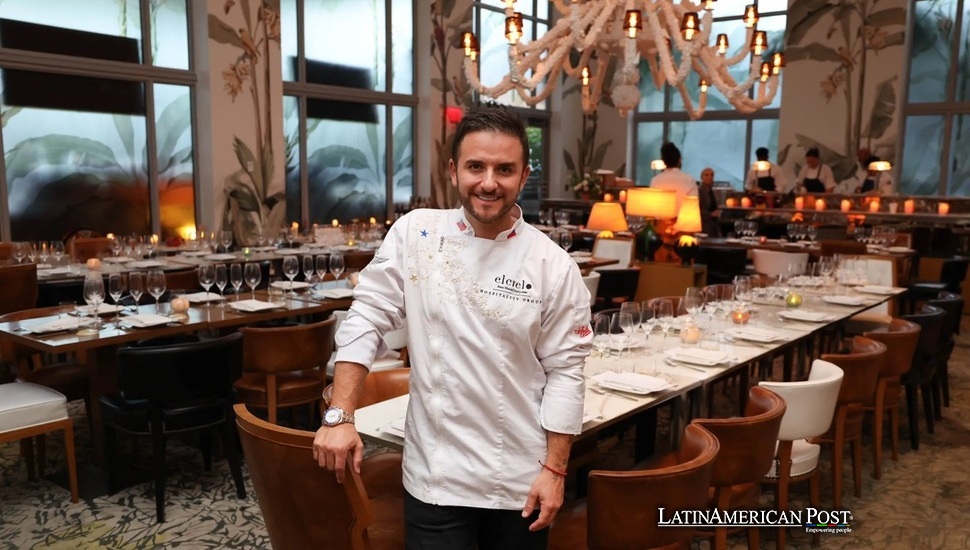South America’s Top Ten Unforgettable World-Class Restaurants

From the Peruvian highlands to Chilean valleys, these must-try restaurants reveal the culinary magic fueling South America’s gastronomic revolution. Crediting The Australian for compiling this list, we explore ten distinct remarkable eateries spanning diverse nations, innovative chefs, and local traditions.
A Tapestry of Andean Heights
South America’s rugged peaks and high-altitude landscapes have long shaped its distinctive cuisines, yielding earthy, robust dishes that delight travelers worldwide. Chefs turn ancestral traditions into modern feasts in Peru, Bolivia, Colombia, and Ecuador, drawing on recipes passed down through centuries of Indigenous knowledge.
Puqio, Colca Canyon (Peru)
Located three hours north of Arequipa, which UNESCO recognizes as a Creative City of Gastronomy, Puqio celebrates the Colca Canyon’s natural bounty. Although Lima’s gastronomy dominates headlines—particularly after several of its restaurants claimed the top spot on the World’s 50 Best Restaurants list—Puqio shines a spotlight on Peru’s lesser-known regional flavors. Guests dine amid a luxury safari-style encampment, where skilled chefs craft five-course degustation menus using everything from volcanic stones to clay ovens. Emphasis on fresh produce ensures dishes like “a homage to quinoa” or “altiplano lake fish” are sourced from the camp’s garden or neighboring farms on centuries-old terraces. Plump native potatoes, grown in on-site gardens, form a tasty bridge between ancestral tradition and refined culinary craft.
Popular Cocina Boliviana, La Paz (Bolivia)
The steep streets and high altitude in La Paz cloak a blossoming gastronomic scene that merges everyday comfort food with upscale innovation. Popular Cocina Boliviana stands as an ideal introduction to modern Bolivian fare. For a mere 89 bolivianos (about $20), patrons enjoy a three-course meal featuring local favorites, such as jerked llama meat in empanadas or braised Amazonian paiche, presented in brightly hued plates reminiscent of the colorful garments worn by Aymara women in the city. The restaurant’s popularity underscores Bolivia’s emerging culinary scene—a movement many trace back to Copenhagen’s Noma co-founder Claus Meyer, who opened a pioneering La Paz restaurant in 2013 and spurred the local industry to new heights.
Restaurante Leo, Bogotá (Colombia)
Nestled in the upscale Zona G neighborhood of Bogotá, Restaurante Leo offers a sweeping exploration of Colombia’s myriad ecosystems, from the chilly Andean highlands to the steamy lowland savannas. Winner of “The World’s Best Female Chef” title in 2022, Leonor Espinosa infuses her tasting menus with anthropological insight, delving into indigenous ingredients and lesser-known flora. Visitors might sample Amazonian coquito seed oil or tart ponzu fruit, all served in multi-course experiences that feel like a gastronomic field trip through Colombia’s vast terrain. After dining, guests can head upstairs to La Sala de Laura for inventive cocktails blended with house-made spirits and local botanicals, capturing the region’s biodiversity in liquid form.
Zazu, Quito (Ecuador)
With Quito’s recent emergence as a culinary powerhouse, few spots encapsulate the city’s gastronomic daring quite like Zazu. Situated in a sleek Relais & Châteaux property, chef Wilson Alpala crafts an imaginative take on Ecuadorian staples that might include oxtail or guinea pig served three ways—confit, in ravioli, and atop a corn tortilla. Adventurous eaters will be surprised by the playful approach to such traditional proteins, and the dessert menu is equally artistic, featuring a cacao pod illusion made of chocolate mousse. Zazu’s staying power for nearly two decades reflects Quito’s rising status, proving that the Andean capital remains at the cutting edge of South America’s fine-dining scene.
Where Coastal Charm Meets Culinary Innovation
Blessed with miles of shoreline and vibrant port cities, coastal regions of South America serve up an irresistible interplay of land and sea. In Uruguay and Brazil, new restaurant concepts tap into local fishermen’s daily catches and regional produce, marrying innovative techniques with casual sophistication.
Cora, São Paulo (Brazil)
Though São Paulo lies inland, the city’s love for fresh produce and bold flavors permeates every neighborhood. Overlooking the elevated highway-turned-urban park Minhocão in Vila Buarque, Cora redefines the rooftop dining experience. Indigenous Jujeno chef Pablo Inca crafts a dynamic, market-driven menu that might showcase sashimi-style yellowtail in cashew juice or vibrant zucchini flowers stuffed with ricotta and pistachio. Pair these plates with playful wine options—some from emerging Brazilian regions like Serra Gaúcha—and you quickly see why Cora has become one of the toughest reservations in town. The rooftop setting and an ever-evolving selection of vegetables underscores how Brazil’s largest city continues to set the pace in South American gastronomy.
Parador la Huella, José Ignacio (Uruguay)
Sun-kissed beaches and linen-clad jet-setters define José Ignacio’s leisurely summers. Still, Parador la Huella captures the relaxed, understated elegance that has made this Uruguayan resort town a magnet for discerning travelers. Just steps from the water, the restaurant tempts diners with fire-grilled octopus, fresh sea bass, and an array of Argentinian and Brazilian visitors who flock here during high season. Translating to “the footprint,” La Huella pairs its culinary experiences with nearby wines from the Garzón region. Each bottle of crisp Albariño or bold Tannat underscores the synergy between local terroir and ocean breezes, rounding out meals that epitomize the best South American coastal living.
The Magic of Wine Valleys
South America’s reputation for wine isn’t confined to its most prominent appellations in Argentina and Chile; even so, the well-established valleys in these nations produce vintages that have soared in global esteem. Alongside the wine, enterprising hoteliers and chefs harness local produce and architectural marvels to create immersive gastronomic experiences.
Vina Vik, Cachapoal Valley (Chile)
Vina Vik stands as a towering testament to Chile’s vinicultural ambition. Conceived by Norwegian billionaire Alexander Vik and his wife, Carrie, this winery complex two hours south of Santiago marries cutting-edge design by Chilean architect Smiljan Radic with the high-octane pursuit of Bordeaux-style blends. Bottles of Vik’s reds now command prices rarely seen in the Chilean wine market. Guests can check into a Frank Gehry-inspired hotel perched on a hill and then descend into subterranean cellars to sample an array of limited-release wines. With a bounty of produce grown alongside the vines, two on-site restaurants transform local vegetables, herbs, and proteins into artful, farm-to-table dishes. Original Latin American artworks pepper the dining rooms, underscoring the estate’s mission to fuse fine wine, design, and hospitality into one unmatched encounter.
SB Winemaker’s House, Mendoza (Argentina)
Mendoza’s Malbec-fueled fame has lured travelers for decades, but Susana Balbo’s SB Winemaker’s House elevates the region’s indulgent traditions to a new level. This seven-suite hotel also acts as a kitchen lab: guests might try a 14-course dinner at chef Flavia Amad’s La Vida, with each plate matched with premium bottles from Balbo’s cellars. Beyond the lavish meals, selected tours show local farms that let visitors see the region’s farming roots. Picnics at stately chateaux, wine-blending tutorials, and vintage tastings fill days between lavish dinners. Plans for the upcoming SB Mountain Eco Lodge & Spa in the Uco Valley promise further expansions of this gastronomic and vinicultural paradise. Whether strolling vineyards under the Andean sun or savoring meticulously prepared courses, each moment reaffirms Mendoza’s standing as Argentina’s wine Mecca.
Between Rivers and Bold Explorations
From labyrinthine river systems teeming with biodiversity to stark deserts hiding unexpected culinary treasures, certain corners of South America redefine the notion of remote gastronomic adventures. Whether aboard a cruise deep in the Amazon or sampling donkey sausage in Chile’s Atacama-inspired restaurant, brave diners find fresh ways to experience the continent’s range.
Aqua Nera, Iquitos (Peru)
While river cruises often conjure images of standard buffet fare, Aqua Nera flips that assumption on its head. Setting sail from Iquitos, Peru—one of the most isolated major cities in the world—this luxury vessel immerses travelers in the Amazon’s breathtaking ecosystems and then plates that environment with refined culinary offerings. Spearheaded by Peruvian chef Pedro Miguel Schiaffino, a pioneer in rainforest-to-table cooking, Aqua Nera’s menus spotlight Amazonian ingredients such as unusual tropical fruits, freshwater fish, and local herbs. Select itineraries even feature chef-led excursions, inviting guests to fish for the day’s ceviche or gather exotic produce used in cocktails. Spot three-toed sloths and pink dolphins daily, then indulge in gastronomic wonder by night—a once-in-a-lifetime exploration of nature’s bounty.
99 Restaurante, Santiago (Chile)
Chile’s famed Atacama Desert is often associated with otherworldly landscapes and a near-total absence of life. Still, chef Kurt Schmidt at 99 Restaurante in Santiago sees it as a gateway to a hidden trove of flavors. After a four-year hiatus, 99 reopened in 2024 with a renewed mission: examine Chile’s agricultural valleys one at a time, reintroducing local recipes and underappreciated ingredients to diners in the capital. Their inaugural focus on the Atacama region highlights donkey sausage, goat cheese ice cream, and produce from the Huasco Valley—a rare green corridor in the desert. Sommelier Rocio Alvarado complements these dishes with unique collaborations from lesser-known vineyards. As the seasons change, 99 will pivot to exploring the Aconcagua Valley, proving that undiscovered culinary corners abound even in a geographically diverse country.
As The Australian’s compiled list suggests, these ten South American dining spots underscore a broader transformation, redefining what’s possible with local ingredients, architectural wonders, and cultural heritage. Each destination offers an authentic interpretation of its surroundings, from sweeping canyons in Peru to bustling cityscapes in Brazil and serene vineyards in Chile and Argentina. They show the continent’s changing food traditions, where basic creativity exists in mountains, deserts, coasts, and jungles.
For travelers, the rewards are many: a visit to the altiplano’s traditional dishes at Puqio, a new version of core dishes at Zazu, or a small wine tasting in Vik’s underground cellars. Travelers who follow the Amazon’s winding waters on the Aqua Nera find local flavors matching the regional wildlife. Meanwhile, short city breaks to sizzling culinary capitals—La Paz or São Paulo—reveal the fast-changing tapestry of cutting-edge flavors and fresh produce.
These restaurants offer not only meals but also stories that show South America’s past, nature, and crafts. Whether you try donkey sausage near the Atacama or feel the salty sea air at José Ignacio, each dish proves the continent can always change.
Also Read: Mexican Cuisine Dominates U.S. Restaurants, Pew Study Finds
Ultimately, these restaurants demonstrate that South America’s gastronomic surge isn’t confined to a few famous urban corners or well-trodden wine routes. Instead, it’s woven into the fabric of daily life and local tradition—from highland terraces to dusty deserts and vine-laden valleys to coastal enclaves. As you plan your next journey, be prepared for culinary revelations that blend heritage with modern technique, forging an unmistakably South American identity and undeniably one of the most compelling on the global stage. If you yearn to explore these tastes and textures, now is the perfect time to journey across cities, valleys, and rivers. Thanks to The Australian’s discerning eye, each restaurant on this list will give you a front-row seat to how tradition, innovation, and a reverence for local produce converge to define the flavors of an entire continent. Bon voyage, and buen provecho.





